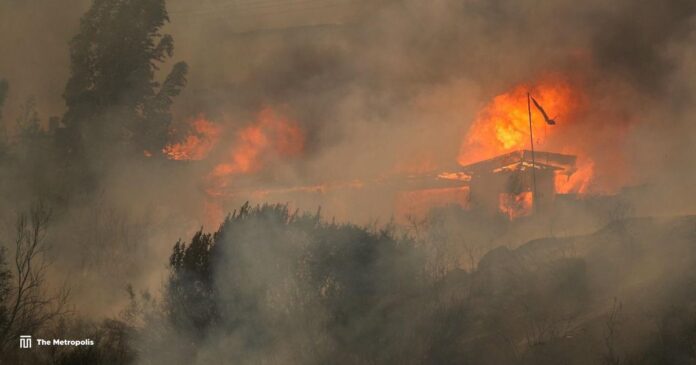Prosecutors have officially accused a volunteer firefighter and a Chilean forestry official of being involved in starting the wildfires that ravaged central Chile in February of last year, killing over 130 people.
Thus far, Francisco Ignacio Mondaca, a volunteer firefighter, and Francisco Pinto, a representative of Chile’s National Forestry Corporation (CONAF), a division of the Agriculture ministry tasked with forest fire prevention, have been implicated.
Both suspects were being held pending trial, according to the prosecutor’s office in Valparaiso, a seaside city in the districts most affected by the flames, which released a statement on Saturday.
It was not possible to get in touch with the men’s attorneys right away.
Authorities identify the CONAF official as the plot’s mastermind and claim that Mondaca, the firefighter, carried out the plan.
The prosecution claimed they had proof that Moncada and Pinto intentionally started fires and knew when the best weather was for doing so.
The Valparaiso regional prosecutor, Claudia Perivancich, told reporters, “We have material that shows that they agreed to act jointly when the appropriate meteorological conditions arose to ensure that the fires occurred.”
Authorities discovered that devices comprised of cigarettes and matches that ignited the fires were also discovered in each of the four locations where the fires started on February 2.
According to a post on the prosecutor’s office X account in Valparaiso, the judge granted the authorities six months to complete the investigation, stating that additional work needed to be done on the instances of missing victims and each suspect’s cell phone.
A post on X from the prosecutor’s office in Valparaiso stated that Mondaca was connected to six prior fires that happened in the neighborhood, as stated by prosecutor Osvaldo Ossandon.
The 2010 earthquake and tsunami that claimed more than 500 lives in South America was not as severe a natural disaster as the current flames.
Severe heat waves have hit Chile, Argentina, and other portions of South America’s southern cone; researchers predict that these events will grow more frequent in the southern summer months as a result of climate change.
The El Niño climatic phenomenon, which warms the Pacific Ocean, has also made the extreme weather in Chile worse.



